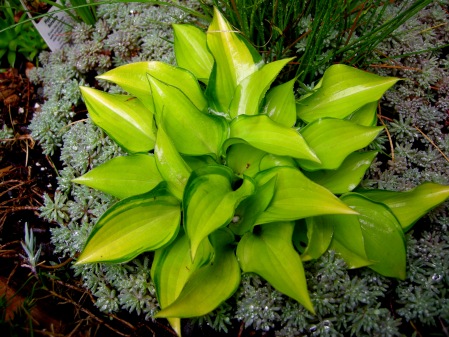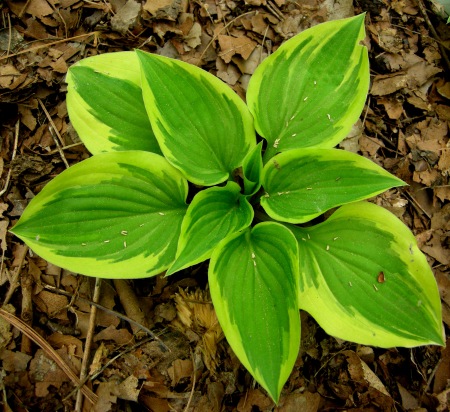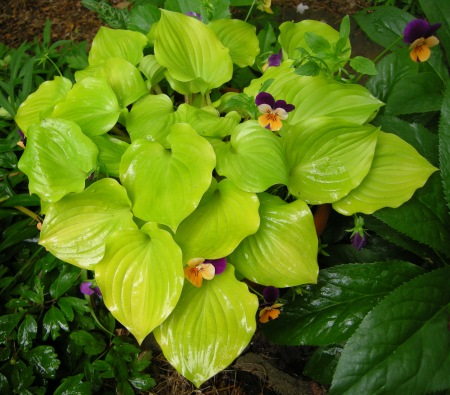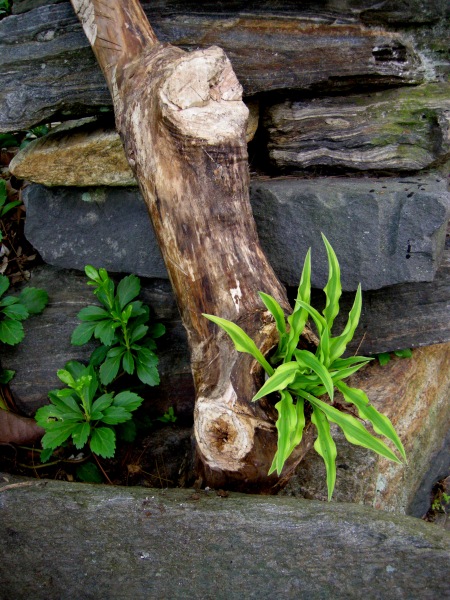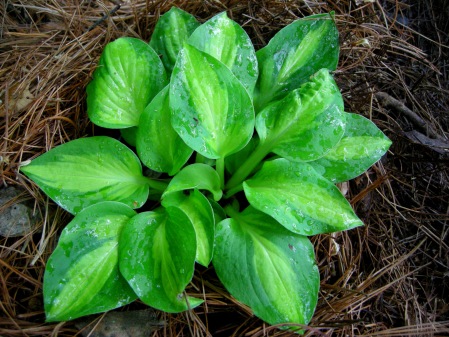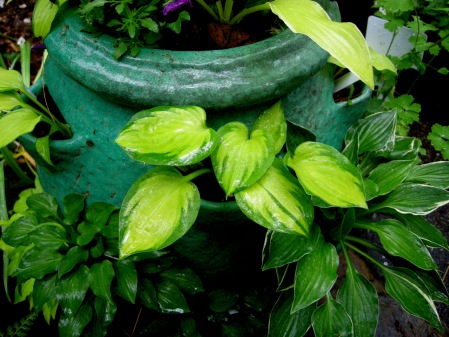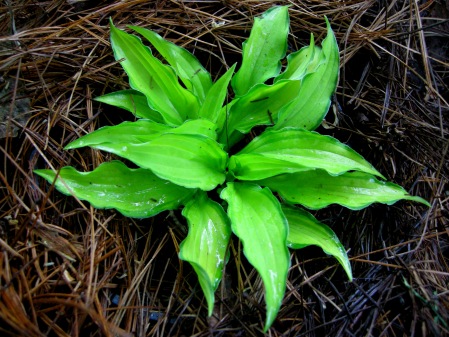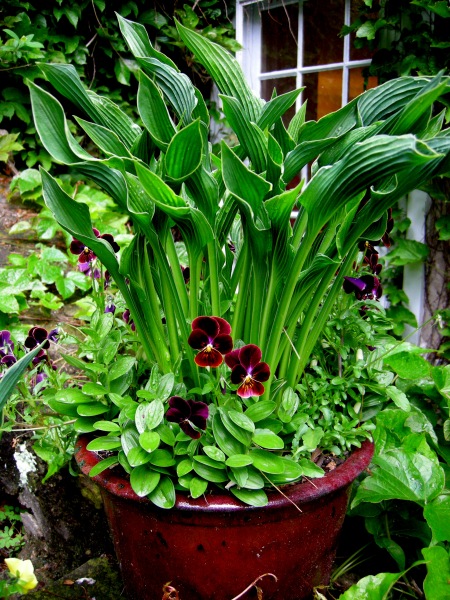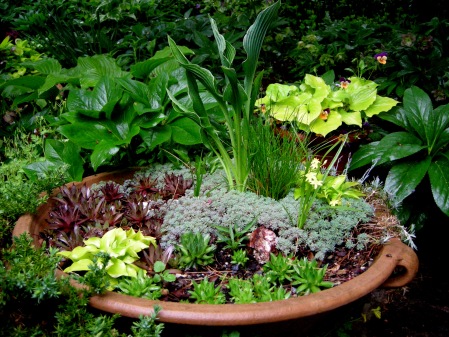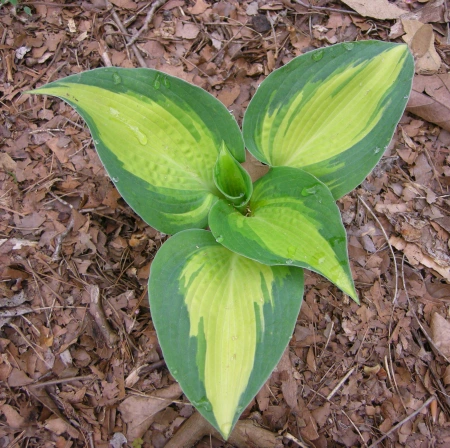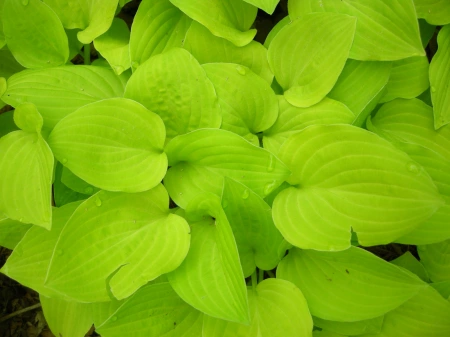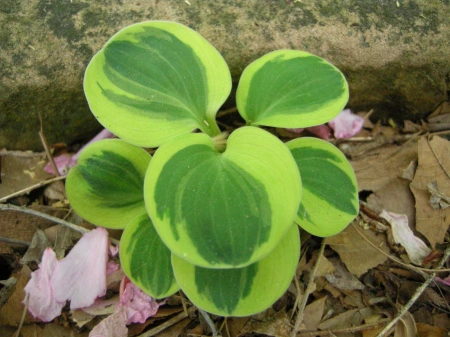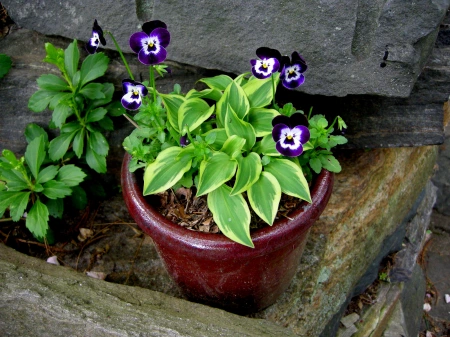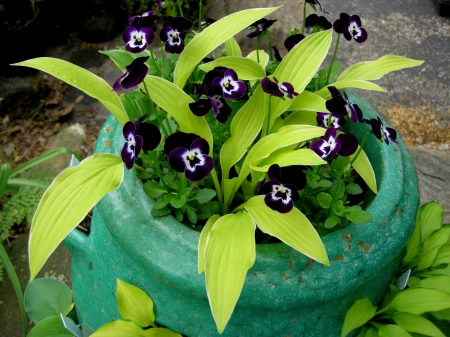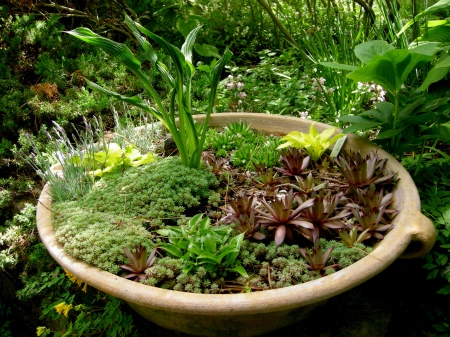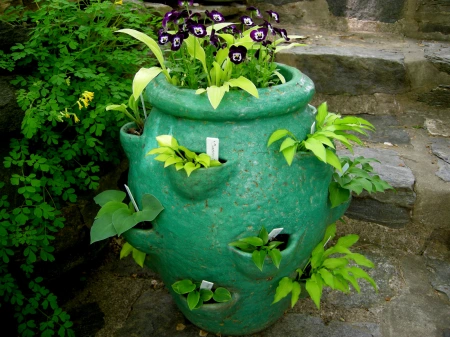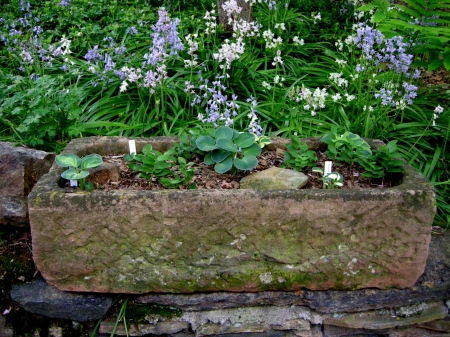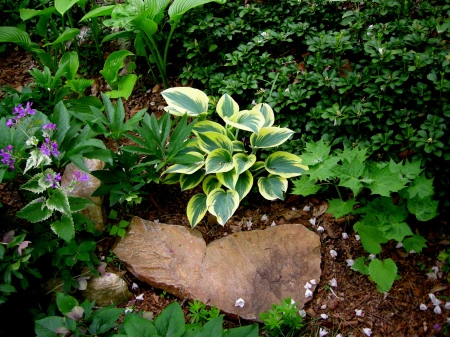Carolyn’s Shade Gardens is a retail nursery located in Bryn Mawr, PA, specializing in showy, colorful, and unusual plants for shade. The only plants that we ship are snowdrops and miniature hostas. For catalogues and announcements of events, please send your full name, location, and phone number (for back up use only) to carolyn@carolynsshadegardens.com. Click here to get to the home page of our website for catalogues and information about our nursery and to subscribe to our blog.
.
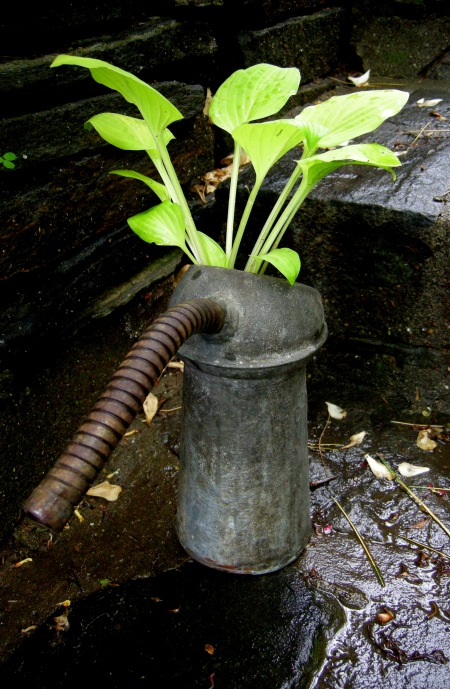 When finding containers for your hostas you have to think outside the box: “Carolyn’s Gold” hosta in an antique kerosene can.
When finding containers for your hostas you have to think outside the box: “Carolyn’s Gold” hosta in an antique kerosene can.
This is the third post in a three-part series on small hostas. My nursery specializes in miniature hostas, and I have over 30 varieties available right now, both at the nursery and mail order. In I LOVE Mice, I raved about the mouse ears series of hostas. In Beyond Mice, I highlighted some of my favorite non-mouse ears hostas. My 2011 post Miniature (& Small) Hostas also gives an overview of little hostas and how to use them in the garden. Now I want to focus on the containers you might use to hold your hostas and the plants that will keep them company.
 Probably my favorite medium sized hosta, the straight species Hosta tokudama.
Probably my favorite medium sized hosta, the straight species Hosta tokudama.
Why would you want to grow hostas in a container? One reason I do it is to highlight a hosta’s very special ornamental attributes. I think Hosta tokudama (photo above) is gorgeous so I grow it in a pot outside my front door. Here are some other hostas that I think merit their own container (read my previous hosta posts for photos of other single hosta containers):
 Hosta ‘Little Miss Sunshine’ has bright gold leaves and deep red stems that look like rhubarb. I placed its pot on a wall by my front walk so I can admire the stems up close.
Hosta ‘Little Miss Sunshine’ has bright gold leaves and deep red stems that look like rhubarb. I placed its pot on a wall by my front walk so I can admire the stems up close.
 The elegant hosta ‘Hanky Panky’ grows in an old dogwood stump, also along my front walk.
The elegant hosta ‘Hanky Panky’ grows in an old dogwood stump, also along my front walk.
 I love the very unusual hosta ‘Praying Hands’ and have it in three different containers, here with violas.
I love the very unusual hosta ‘Praying Hands’ and have it in three different containers, here with violas.
 There is no other miniature hosta that looks like ‘Sparkler’ so I gave it its own spot in an antique metal pitcher salvaged from the dump.
There is no other miniature hosta that looks like ‘Sparkler’ so I gave it its own spot in an antique metal pitcher salvaged from the dump.
Small hostas can get lost when planted in perennial borders unless they are massed. Growing special miniature hostas in containers brings them up to eye level. Here are 16 miniatures in my strawberry pot:
It also allows you to pair them with other miniature plants to create a tiny garden. My previous posts contain many photos of my containers of little hostas. However, I thought I would show you some of the planters I have recently created to give my customers ideas and to sell at my upcoming hosta open house:
All these containers were purchased inexpensively at flea markets and antique stores or were salvaged from the dump at the bottom of our property. You probably have a suitable pot, pan, or other hosta garden holder gathering dust in your attic right now.
 Hosta gardens waiting at Carolyn’s Shade Gardens for a new home.
Hosta gardens waiting at Carolyn’s Shade Gardens for a new home.
Choosing tiny companion plants to go with your miniature hostas is another fun part of growing them in containers or in a rock garden. Plant collecting urges are satisfied by all the plants that can be crammed into a small area. In the planters above, I used violas, sedums, hens and chicks, ‘Heartthrob’ violet, ‘Tiny Rubies’ dianthus, and pasque flower (Pulsatilla). Here are some more combinations:
 Hostas ‘Shiny Penny’, ‘Green Eyes’, and ‘Itsy Bitsy Spider’ paired with sedum, hens and chicks, and rosularia in my dish garden.
Hostas ‘Shiny Penny’, ‘Green Eyes’, and ‘Itsy Bitsy Spider’ paired with sedum, hens and chicks, and rosularia in my dish garden.
 Mouse ears hostas with dwarf Solomon’s seal, Polygonatum humile, in my stone trough.
Mouse ears hostas with dwarf Solomon’s seal, Polygonatum humile, in my stone trough.
 Hostas ‘Blue Mouse Ears’ and ‘Blonde Elf’ with miniature lady fern, Athyrium filix-femina ‘Minutissimum’, in the rock garden.
Hostas ‘Blue Mouse Ears’ and ‘Blonde Elf’ with miniature lady fern, Athyrium filix-femina ‘Minutissimum’, in the rock garden.
 Hostas ‘Little Blue’, ‘Blonde Elf’, and ‘Little Wonder’ with a small epimedium in the rock garden.
Hostas ‘Little Blue’, ‘Blonde Elf’, and ‘Little Wonder’ with a small epimedium in the rock garden.
Gardening with tiny plants and salvaged containers is so much fun. I hope you will give it a try.
Carolyn
Nursery Happenings: If you are interested in receiving miniature hostas mail order, click here.
If you are within visiting distance and would like to receive catalogues and information about customer events, please send your full name and phone number to carolynsshadegardens@verizon.net. Subscribing to my blog does not sign you up to receive this information.
Facebook: Carolyn’s Shade Gardens has a Facebook page where I post single photos, garden tips, and other information that doesn’t fit into a blog post. You can look at my Facebook page here or click the Like button on my right sidebar here.
Notes: Every word that appears in orange on my blog is a link that you can click for more information. If you want to return to my blog’s homepage to access the sidebar information (catalogues, previous articles, etc.) or to subscribe to my blog, just click here.







